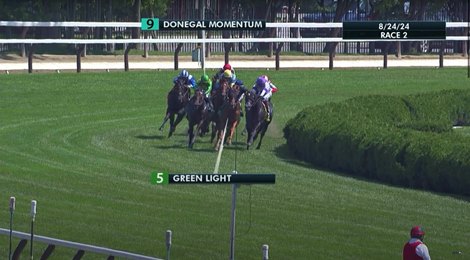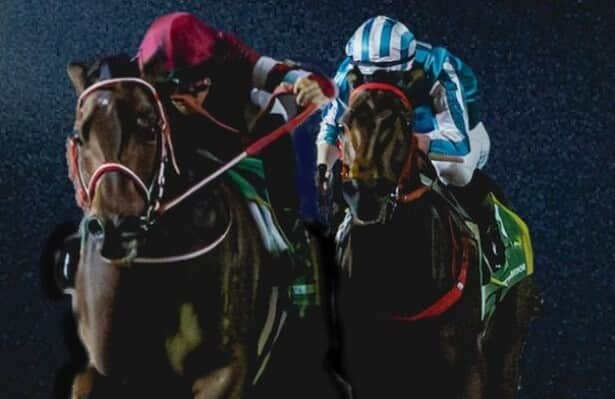If you are wondering why your horse was disqualified in a New York Racing Association race, there’s now a place to which you can turn.
NYRA has launched a new, regular YouTube feature entitled “Stewards’ Review” in which NYRA steward Victor Escobar will explain recent decisions in which horses were disqualified or there was no change in the order of finish after an inquiry.
The videos, which started with a review of the Aug. 18-25 Travers Stakes (G1) week decisions, are the brainchild of Escobar, who will appear in them with a NYRA television personality to discuss what went into the rulings.
The initial video runs for 10:06 and features host Laffit Pincay III and Escobar, who provides clear and concise explanations of each steward’s decision.
The video feature is believed to be the first of its kind for an American racetrack.
“When he took the job, Victor was interested in finding ways to provide more information to the general public. With the television presence we have, it seemed like an opportunity to turn it into some form of a regular segment,” said Andrew Offerman, NYRA’s senior vice president of racing and operations. “The rules for a disqualification in New York are more complex than most states, so Victor believed there was a good opportunity to educate the public on how the process works and how do the stewards reach a decision.”
Escobar is one of three stewards at NYRA’s two operational tracks—Aqueduct Racetrack and Saratoga Race Course—working alongside Braulio Baeza Jr. (New York State Gaming Commission) and Juliet Kagno (The Jockey Club). Together they adjudicate foul claims and Escobar pushed for the video series to improve communications with the people who win or lose money each time a decision made—the betting public.
Laffit Pincay III and NYRA Steward Victor Escobar
“Owners, jockeys, trainers, they have their own way to communicate with the stewards but the customers don’t and they can feel overlooked. They are investing into the product and they deserve to have some insight as to how the process works,” Escobar said. “At the end of the day, it’s for the fans. We’re not trying to change people’s minds about how they view an incident. I think they appreciate knowing there’s a process and that they can hear from the stewards in explaining the rationale. It shows them there’s transparency and I’ve received some nice remarks about doing that.”
Consistency is a goal for any workforce, including stewards. Yet Escobar hopes the videos will show what seems like cases of inconsistent judgment is not what it appears to be because of subtle differences in each incident.
“The problem is that people want consistency but no two incidents are the same. So it’s our duty as regulators to show that we have a consistent application of the rules and a standard that we are held to,” Escobar said.
Escobar became a proponent of reaching out to the fans during his tenure as a steward at Remington Park in Oklahoma. When Oklahoma changed from Category 1 interference rules to Category 2, the new rules called for a disqualification if a horse interfered with his rivals regardless of the circumstances. Under Category 1, which is in effect in New York, stewards have more latitude and can let the result stand if the bumping did not affect the order of finish.
To help educate the Oklahoma fans of the differences in the new rules, Escobar became the voice of the stewards.
“I took it upon myself to change the way we explain the decisions. I would go down to the announcer’s booth and give a brief explanation of the rules and what the stewards are asked to look at. This way the betting public had an understanding of the process,” Escobar said. “When I came to NYRA, I looked for ways to expand on what I was doing.”

A race where a stewards decision was made is discussed on the Stewards Review
So far, only one video has been posted on the “Stewards’ Decision” section of NYRA.com, where reports on each disqualification are posted.
There will be more based on the frequency and volume of inquiries and Escobar believes that bodes well for a future in which verbal explanations from stewards become a standard in the industry.
“I think what we are doing is a great starting point on a weekly or regular basis, but we do want to get to a point where we get information out as soon as possible,” Escobar said. “I really hope it catches on with other jurisdictions so that there’s more transparency around the country.”
While fans will never unanimously agree on the right or wrong of a disqualification, more transparency surely seems like something every type of bettor can support.













